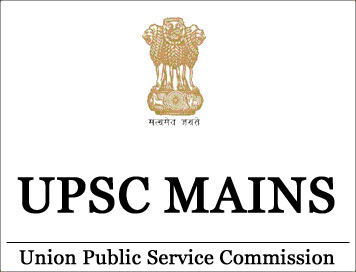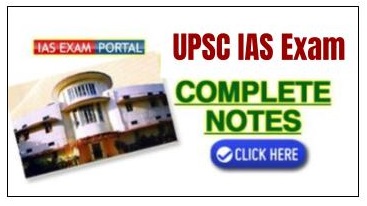(HOT) UPSC Current Affairs 2025 PDF
NEW! The Gist (NOV-2025) | E-BOOKS
UPSC IAS Mains 2005 Law (Paper -1 & 2) Optional Question Paper

UPSC IAS Mains 2005 Law (Paper -1 & 2) Optional Question Paper
Exam Name: IAS Mains
Year: 2005
Subject: Law (Optional)
Paper-I
Section - A
1. Answer any THREE of the following (each answer should be in about 200 words):
(a) “Article 16 (4) is by itself a rule of equality rather than an exception
to the rule.” What is your view? Discuss with the help of case- law.
(b) “The fundamental right to freedom of speech and expression has in recent
times seen expanding horizons.” Discuss and point out the judicial approach in
this regard.
(c) “The constitutional scheme of the distribution of legislative powers weights
heavily in favour of the Union Parliament.” Elucidate with the help of
constitutional provisions and judicial decisions.
(d) “The Indian federal structure has brought in some novel provisions which are
not to be found in other federations.” Critically discuss.
2.
(a) “All these years Article 368 has seen a tug of war between the
constituent power and power of judicial review.” Comment on and narrate this
development in detail.
(b) Discuss the scope of the Original and Advisory Jurisdictions of the Supreme
Court of India. Also give in brief your response to the view that the Advisory
Jurisdiction to be abolished.
3.
(a) “Secularism is neither anti-God not pro- God. It eliminates God from the
matters of State and ensures that no one shall be discriminated on the grounds
of religion.” In the light of the above observation discuss the true import of
freedom of religion guaranteed under the Indian Constitution.
(b) Is the President of India a mere constitutional head? Is he bound to accept
the advice of the Council of Ministers? Discuss fully stating constitutional
provisions.
4.
(a) Examine the scope of Proclamation of Emergency by the President of India
and enumerate the safeguards introduced by constitutional amendments to present
abuse of these powers.
(b) “Bias vitiates all judicial and quasi-judicial proceedings.” Comment on this
statement and give two examples to illustrate the principle.
Section - B
5. Answer any three of the following (each answer should be in about 200 words) :
(a) “Aut dedere aut judicare obligation is a common feature of the recent
anti-terrorism conventions.” In the light of this statement explain the rules of
International law pertaining to extradition of terrorists.
(b) “The authors of the United Nations Charter were the first to regard respect
for human rights as an instrument of peace.” Explain the above statement in the
light of the provisions of the U.N. Charter relating to the promotion of human
rights.
(c) Define intervention and state the grounds under which it is justified under
International Law.
(d) In what circumstances may the use of force be legal under the United Nations
Charter? Critically comment.
6.
(a) What are the conditions for granting asylum in a diplomatic embassy? When
is this asylum regarded irregular? Explain with illustrations.
(b) Write a critical note on the provisions of the Vienna Convention on the Law
of Treaties, relating to the grounds of invalidity, termination and suspension
of the operation of treaties.
7.
(a) Discuss the provisions relating to the exercise of control by a coastal
state over the artificial islands, installations and structures constructed by
it in the Exclusive Economic Zone and the conservation and utilisation of living
resources therein.
(b) The 1972 Stockholm “Declaration on Human Environment” and “Action Plan on
Human Environment” create a new relation ship of rights and obligations between
developed and developing countries. Explain.
8.
(a) Critically examine the provisions of the United Nations Charter which
enables the United Nations to perform its primary role of peace-keeping. Does
the Charter require any reform in this respect?
(b) What do you understand by state succession? To what extent does succession
take place to (a) the treaty rights and obligations, and (b) contractual
obligations of the extinct state? Explain.
Paper-II
Section - A
1. Answer any three of the following (answer to each question must not exceed 200 words). Support your answer with legal provisions and decided cases :
(a) Under what conditions may the defence of insanity be pleased on behalf of
an accused?
(b) Discuss, “attempt to commit suicide,” referring to the decisions of the
Supreme Court on the Constitutional validity of Section 309 of the Indian Penal
Code.
(c) What is meant by ‘innuendo’? What are the facts, the Plaintiff must prove or
establish in order to sustain a plea of innuendo?
(d) Which one of the following two expressions is correct and why? ‘Law of Torst’
or ‘Law of Tort’.
2.
(a) Discuss the importance of mens related with criminal law. Also explain
the role of mens related in statutory offences with the help of relevant case
law.
(b) X strikes Y with a stick. Y is by this provocation excited to violent rage.
Z, a bystander intending to take advantage of Y’s rage and to cause him kill X,
puts a knife into Y’s hand for that purpose. Y kills X with that knife. What
offence is committed by Y and Z? Explain and discuss with reasons.
3.
(a) The liability of joint tort-feasors is’joint and several’. In the light
of this statement discuss who are joint tort-feasors and their liability with
the help of illustrations and case law.
(b) “In tort of malicious prosecution the plaintiff must prove among other
things, that the defendant was the person who was actively instrumental in
putting the law in force”. Discuss.
4.
(a) When is a public servant said to have committed an offence of criminal
misconduct as defined in the Prevention of Corruption Act, 1988? Discuss
referring to some decided cases.
(b) “The evil of dowry system has been a matter of serious concern to every one
in view of its everincreasing and disturbing proportion.” Discuss and critically
analyse whether the Dowry Prohibition Act, 1961 can cope with this social
menace.
Section - B
5. Answer any three of the following (answer to each question must not exceed 200 words) :
(a) “All contracts are agreements but all agreements are not contracts”.
Explain.
(b) “A contract without consideration is void but there are some contracts,
which even though made without consideration, are valid”. Discuss.
(c) “Enumerate and explain briefly those relations in the Indian Contract Act
which resemble those created by a contract.
(d) “The authority of an agent means his capacity to bind the principal”.
Discuss.
6.
(a) “The Indian Partnership Act has effectively ensured the registration of
firms without making it compulsory”. Comment.
(b) A, B, C and D are partners in a firm which has not been registered. A is
wrongfully expelled from the firm by the other partners. Can he successfully
bring a suit against the other partners for damages for wrongful expulsion and
declaration that he continues to be a member of the firm? What remedies if any
are open to A?
7.
(a) Define and distinguish between a ‘Condition’ and a ‘Warranty’. Under what
circumstances can a breach of condition be treated as a breach of warranty?
(b) A sells his motor car to B, one cylinder of which is slightly cracked to A’s
knowledge. B examined the car but failed to detect the time of purchasing the
car. Later on, the defect comes to the knowledge of B. Can he rescind the sale
and get back the price paid by him?
8.
(a) “In most cases reference to arbitration shuts out the jurisdiction of the
courts, except as provided in the Act, and since criminal courts cannot be
deprived of their jurisdiction to try criminals, no criminal matter can be
referred to arbitration”. Comment.
(b) “In any event, adaptability and access to expertise are hallmarks of
arbitration”. Discuss the advantages of arbitration over litigation.

